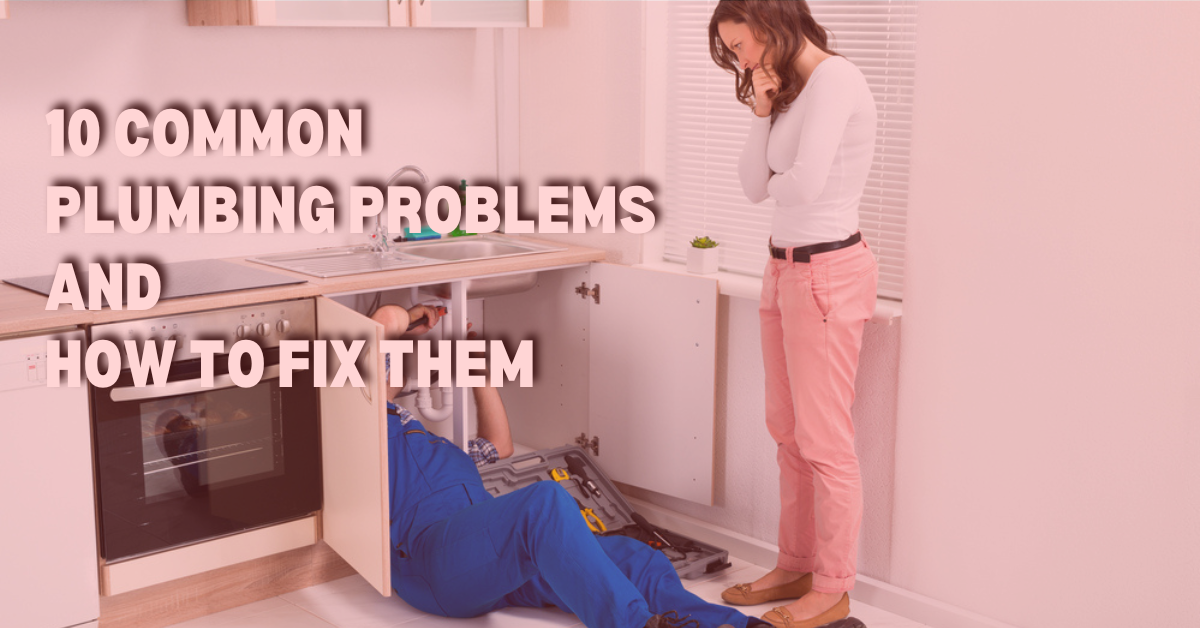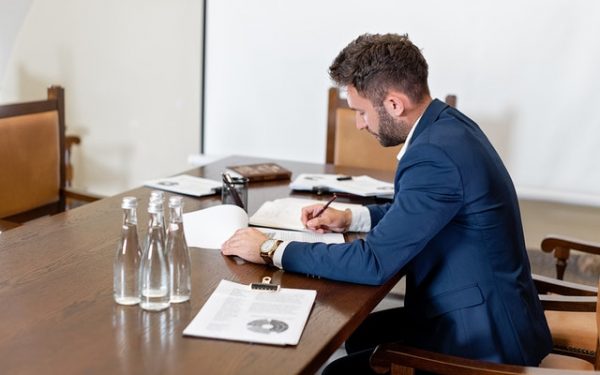10 Common Plumbing Problems; How to Fix Them

Part of being a homeowner is dealing with various problems and mishaps that can occur at home. Among the most common problems faced by homeowners are issues that relate to the house’s plumbing system. The home’s plumbing system can malfunction at any time and no household is exempted from such troubles. Plumbing issues can range from minor ones such as a leaky faucet or clogged toilet. This can be readily addressed with a DIY and does not necessarily require you to hire a professional plumber. To the serious cases of pipe leaks and sewer backups it when you may hire a plumber expert.
Unfortunately, many of us still tend to neglect to take proper care of our plumbing fixtures. We only realize and pay attention to the problem when a major catastrophe finally unfolds. That it’s almost too late to repair the damages suffered by most of our property and belongings at home.
Significance of a Plumbing System
According to Benjamin Franklin Plumbing® of Rosenberg, one has to value the importance of plumbing and that people should not take the plumbing system for granted. If we recall, early civilizations went through extreme discomfort and sickness due to the lack of a proper plumbing system. People back then were so ignorant about good hygiene. With the absence of plumbing systems, were in very poor sanitary conditions and they acquired serious infections and contagious diseases. However, thanks to the discovery of plumbing, households got to have proper water control as well as a clean and sustainable water supply.
Common Plumbing Problems to Watch Out For
Since plumbing maintenance is an integral part of homeownership, households have to be aware of the common plumbing problems. What will they encounter and how they can fix or prevent it without having to call a licensed plumber. Here are the issues that most likely occur in the house and some plumbing work you can do to help fix them:
- Dripping faucets. This is a normal malfunction that every homeowner may witness in the home. No matter how small the leak is, one needs to resolve a leaky faucet before it turns into a larger one. Admittedly, having a dripping faucet can be quite annoying. Besides the irritating tapping sounds that go with the constant dripping. This problem causes water wastage and thus increases your water bills. Good thing, dripping faucets are something you can fix with a DIY method. As long as you have the tools and the basic knowledge of plumbing maintenance. Some of the basic plumbing is disassembling and reassembling the faucet and replacing the defective parts that cause the leaks. WM. Henderson suggests the following basic steps to fix the problem:
- Turning off the water supply to the faucet
- Disassembling the handles of the dripping faucet
- Removing the cartridge or valve stem
- Checking parts like the O-rings, rubber washers, and seals for possible damages
- Replacing the defective parts with new exact duplicates
- Reassembling the faucet
- Clogged bathroom drains. With constant bathing or showering in the bathroom, it can’t be helped that soap, hair, and other residues will get accumulated over time. This will cause the bath and shower drain to get clogged. Fixing a blocked-up drain typically needs the use of a plunger or snake. Using the plunger to unclog the drain works well if you have to ensure that the water in the shower is enough to submerge the plunger.
- Slow drains. Like clogged drains, a slow drain is a common minor issue. This is something that has to fixed right away to prevent the drain from being completely blocked. Usually, a slow draining sink is a sign that your drain has been clogged due to food residue and/or congealed fat or grease. According to Goodman (2022), one way to unclog the drain is by pouring chemicals down the drain to dissolve the clog. Be cautious though as chemicals may damage pipes if not properly applied. A DIY alternative is using baking soda and vinegar.
- Leaky pipes. This particular plumbing issue is especially common during winter when your pipes get frozen leading them to burst. That is why it is best to constantly do an inspection of your piping system to spot possible damages such as corrosion, cracks, blockage, and excessive water pressure, which may cause the pipes to leak. To prevent burst pipes, which will eventually result in leaky pipes if left unfixed, Architecture Lab recommends preventive measures such as letting your taps slowly drip as the constant water flow will relieve the pressure in your pipes. Also, you have to set your thermostat and let warm air circulate around your home during the cold season to prevent your pipes from freezing. If you have leaky pipes and have no knowledge at all on how to fix the problem, the ideal thing to do would be to call a plumbing professional.
- Low water pressure. Having low water pressure can be annoying as it can affect the functions of other plumbing fixtures at home. The usual reasons for low water pressure include sediment build-up in your faucet aerators, hidden leaks, and defects (i.e. clogs and leaks) in your sewer lines and/or pipelines. That is why one should not take this problem lightly. To loosen and remove mineral deposits and sediments from your aerators, as well as your showerheads, Talmich Heating & Plumbing suggests unscrewing the faucet aerators and soaking them in white vinegar overnight. If the problem continues despite cleaning your aerators and showerheads, then it’s time to ask help from a plumbing specialist to look deeper into underlying conditions in your plumbing.
- Defective water heater. One of the worst things that can happen while taking a supposedly warm and soothing bath in the shower is when your water heater suddenly malfunctions and you get cold instead of water. If your water heater becomes broken, your only choice is to have it fixed by a plumber.
- Sewer line back-up. Having a backed-up sewer system can be quite a stressful and unhygienic experience. If you keep sensing that persistent bad odor resembling that of human waste, it’s a telltale sign of a clogged sewer line. You may notice an unpleasant smell coming from your drains, either in the bathroom or kitchen. Fixing sewer system backup may cost you a lot of money especially if the problem happens within your property. You have to bear the expenses and first hire a plumbing expert to figure out the blockage’s location. However, if the backup problem is located within a public road and the water company is the one at fault. Then the water company will step in and have it fixed for you. Nonetheless, to avoid such problems in the future, be careful with what you flush down your toilet and drain. The rule is to not treat your toilet and drain as a trashcan. Another cause of blockage in your sewer line is tree roots invading and damaging your pipes.
- Jammed garbage disposal. Garbage disposals are quite handy for they grind whatever food substances that get through your drain. However, this equipment can also get worn out and sometimes become clogged up, especially when you run it without water and when nasty debris or silverware has gotten inside. When this happens, the first thing you do is turn the disposal off and open it. If you can’t open it using its key, a plumber can help you fix the problem.
- Running toilet. Usually, a leaking toilet can be due to a leaky flapper, having the overflow pipe at the wrong height, or a bad fill valve. If the source of the leak is at the base of the toilet, it means the wax seal under the toilet has failed; thus, water pools around the base. Good thing, that fixing a running toilet is easy and is something that is done without calling in a plumber. Provided that you have essential tools like pliers, a hacksaw, and a new fill valve to replace the defective one. Still, some of the tricks you can do for the repair work are: a) checking the flush valve and the fill valve to determine the source of the leak; b) inspecting the flapper; and lastly c) using food coloring to determine a silent leak.
- Clogged toilet. Toilets failing to drain and toilet bowl filling up–these things occur when your toilet is clogged. Clogged toilets happen as a result of throwing nasty debris like tissue paper and plastic into the toilet bowl which causes obstruction. Such practice must be avoided. To fix clogged toilets on your own, you can make use of plumbing tools like the plunger, snake, or auger. If you keep having the same issues over and over again, then hiring a professional plumber is the answer.
Knowing common plumbing problems helps homeowners be prepared for the things that need to be done at home to solve the issue before it gets worse beyond repair. Of course, licensed plumbers are there to assist us with our plumbing needs. They charge as much as $200 per hour for their services. While it’s true that plumbing professionals are the right people to ask for help when faced with plumbing disasters, it still goes a long way if we homeowners are aware of preventive measures and the basics of fixing plumbing mishaps.





